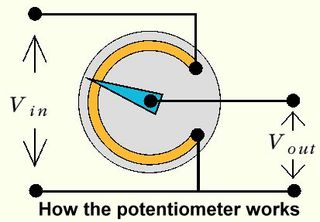PC Racing: Much Easier With A Steering Wheel!
A Good Wheel
Let's start by defining what makes a good wheel. To begin with, it must be accurate. This involves a number of factors. First, there should be no problems with settings. Actually, this is not really a problem, because most wheels now have a self-setting function, which centers them automatically. Anyway, they are connected to the PC via USB port only, and once they are plugged in, they are automatically detected.
The Potentiometer: The Vital Nerve

The next factor is the quality of the potentiometer. This determines the movement on each axis by supplying a higher or lower output voltage, depending on the displacement. The principle is fairly straightforward. An unclosed conductor ring has a certain resistance. A cursor moves along it and its position determines the amount of current that flows through it. This variable is used to deliver movement to the wheel and pedals. The quality of the potentiometer depends chiefly on the quality of the ring and its material, likewise the cursor. If the contact is not permanent, or if the resistance changes, then kiss precision goodbye! Practically all wheel makers use standard potentiometers. The cursor is made of metal with a rounded end and rests on a spiral structure. The resistance ring is usually made of bakelite. The production of potentiometers is so well controlled these days that problems are few and far between. They are all small and low-priced. Just to show that their quality is not a precision factor, MOMO, the dearest wheel, uses a potentiometer like the Logitech starter-price wheel. At least that's what it looks like. Only Microsoft and Saitek have absolutely solved the problem of wear, by using a digital potentiometer instead. A disk with holes in it is set opposite a light beam, and the light is measured as it passes through. The system is precise and free from wear and tear.

Stay on the Cutting Edge
Join the experts who read Tom's Hardware for the inside track on enthusiast PC tech news — and have for over 25 years. We'll send breaking news and in-depth reviews of CPUs, GPUs, AI, maker hardware and more straight to your inbox.
Current page: A Good Wheel
Prev Page Use A Steering Wheel To Drive! Next Page A Good Wheel, ContinuedMost Popular


